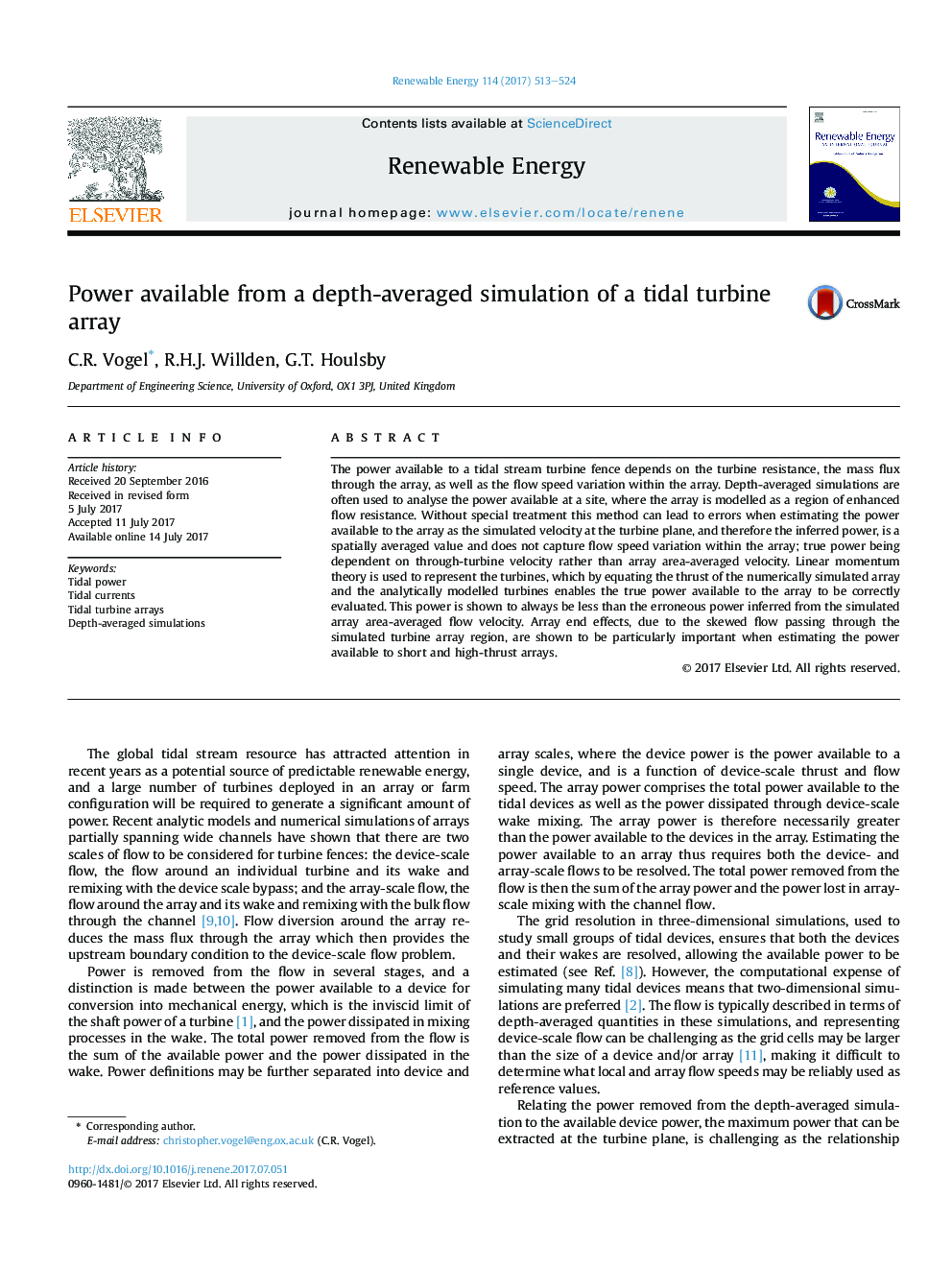| Article ID | Journal | Published Year | Pages | File Type |
|---|---|---|---|---|
| 4926170 | Renewable Energy | 2017 | 12 Pages |
Abstract
The power available to a tidal stream turbine fence depends on the turbine resistance, the mass flux through the array, as well as the flow speed variation within the array. Depth-averaged simulations are often used to analyse the power available at a site, where the array is modelled as a region of enhanced flow resistance. Without special treatment this method can lead to errors when estimating the power available to the array as the simulated velocity at the turbine plane, and therefore the inferred power, is a spatially averaged value and does not capture flow speed variation within the array; true power being dependent on through-turbine velocity rather than array area-averaged velocity. Linear momentum theory is used to represent the turbines, which by equating the thrust of the numerically simulated array and the analytically modelled turbines enables the true power available to the array to be correctly evaluated. This power is shown to always be less than the erroneous power inferred from the simulated array area-averaged flow velocity. Array end effects, due to the skewed flow passing through the simulated turbine array region, are shown to be particularly important when estimating the power available to short and high-thrust arrays.
Related Topics
Physical Sciences and Engineering
Energy
Renewable Energy, Sustainability and the Environment
Authors
C.R. Vogel, R.H.J. Willden, G.T. Houlsby,
